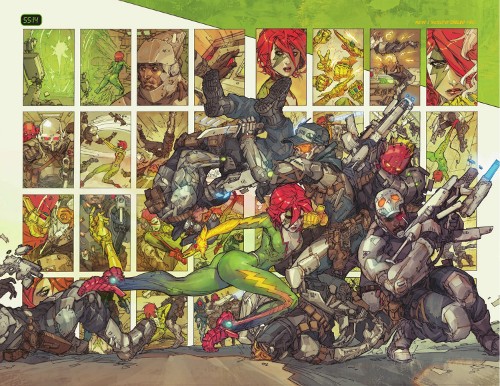Today’s guest post is by liquidcross of The Indigo Tribe.

Let’s take a look back (a flashback, if you will) at a video game that fell under many fans’ radar: a sidescrolling beat-’em-up for the Game Boy Advance starring the Flash. Designed as a side story to the 2006 Justice League Heroes console game, the aptly-named Justice League Heroes: The Flash features the scarlet speedster zipping around the globe as he takes down the forces of evil. Unlike many licensed games, the end result is pretty damned good, so let’s examine why JLH:F is a hidden gem.
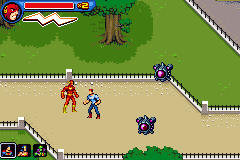
At its core, JLH:F is a 2D brawler reminiscent of the Streets of Rage series. You’ve got the usual punches and kicks to dispatch your foes, but since you’re the friggin’ Flash, you’ve also got his superspeed. (Note: It’s never explicitly stated within the game which Flash this is, as everyone just refers to him as "Flash." However, the developers at WayForward Technologies have stated that it’s the Wally West incarnation). The use of superspeed in the game actually works quite well; the "A" button will dash you to the closest enemy, allowing you get in some swift combo attacks ("B" is your attack button). The "R" trigger will kick you into Flash Speed mode, and everything will appear to slow down…except for you. This is what life is like from the Flash’s perspective, and you can use it to thrash opponents before they even have a chance to react! To keep things fair, though, you’ve got a Speed Force meter right below your lifebar; when it’s depleted, you can’t use Flash Speed mode until it recharges. (Fighting enemies and finding certain powerups will recharge the Speed Force meter.) Finally, if you’re in a real pinch, you can call in other Justice League members to help clear the screen: Superman, Wonder Woman, the Martian Manhunter, Black Canary, or Green Arrow will jump in if you hit the "L" trigger. Their assistance can only be called upon a limited number of times, but you can find powerups that’ll let you summon your fellow Leaguers more often.
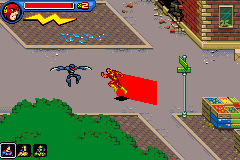
As you progress through the game, you’ll earn new moves (like a whirlwind attack), explore new areas, and face the inevitable bosses. Most of them are classic Justice League villains like Circe, but there’s a few Flash-centric baddies in there such as Gorilla Grodd and my personal favorite, Zoom. Another Flash "villain" appears in JLH:F, but not as a stage boss. Want to find out who? Trying using Flash Speed mode right after you lose your last life.
While JLH:F is a portable game, the graphics are top-notch. WayForward have mastered the art of high quality 2D graphics, and their other games like Shantae, Contra 4, and Batman: The Brave and the Bold are shining examples of their craft. JLH:F is no different; the sprites may be tiny, but they’re filled with detail and fluidly animated. Last but not least, let’s take a look at the game’s audio and extras. The background music’s pretty good, and the sound effects are standard beat-’em-up fare. JLH:F is peppered with voice clips, and that really makes it feel like you’re playing an arcade title. Some of the clips might get annoying after a while, but still, it adds to the overall charm of the game. As far as extras are concerned, you can unlock the game’s cutscenes, background information, preproduction art, and more.
Overall, JLH:F is a very good game, but there are two minor flaws. One is the aforementioned focus on Justice League villains. For a Flash game, it would’ve been nice to see a game filled with the hero’s infamous Rogues. Where the hell are Captain Cold and Mirror Master?! The other downpoint is the poor quality cutscene art. I understand that WayForward probably didn’t want to hire a professional comic book artist just to do a few tiny panels here and there, but the art they did use is subpar. Even worse are some of the coloring errors, like the one seen below:
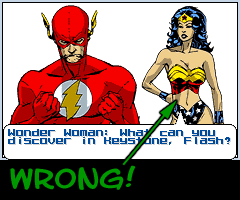
I don’t recall Wonder Woman sporting a bare midriff in the comics; this ain’t an early 1990s Image book. That’s supposed to be armor plate! I know it seems like a minor concern, but it’s a rather glaring (and annoying) error.
Fortunately, these flaws have no effect on the gameplay, and that’s all that really matters. The game engine is rock-solid, and the Flash plays just like he should, dashing around dealing out ass-kickings at superspeed. JLH:F is a great street-brawlin’ game that’ll bring back fond arcade memories for anyone who sank tons of quarters into Final Fight and its brethren. The Game Boy Advance may have been rapidly swept away by the Nintendo DS, but games like JLH:F prove that the GBA still had some life left in it towards the end. For Flash and beat-’em-up fans alike, Justice League Heroes: The Flash belongs in your library. Start diggin’ around on eBay…
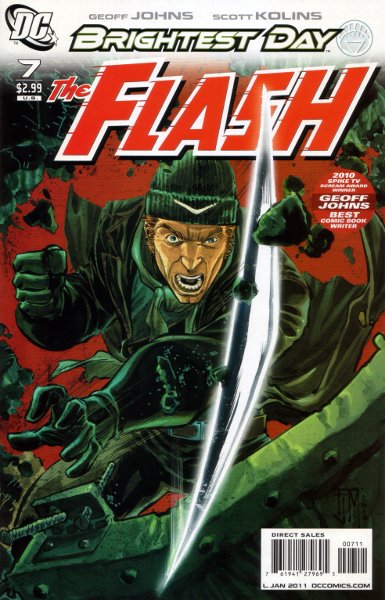


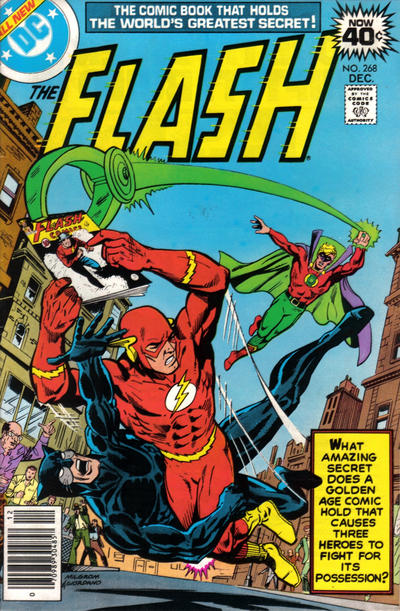
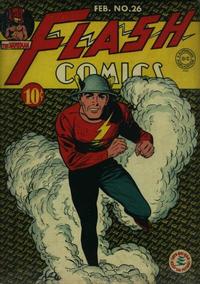 The first Flash comic I remember purchasing was Flash #268. If you just look at the cover, you will discover three characters fighting over a Golden Age comic, Flash Comics #26. The cover blurbs state that this is “the comic book that holds the world’s greatest secret!” In the bottom left corner, the cover asks the question, “What amazing secret does a golden age comic hold that causes three heroes to fight for its possession?”
The first Flash comic I remember purchasing was Flash #268. If you just look at the cover, you will discover three characters fighting over a Golden Age comic, Flash Comics #26. The cover blurbs state that this is “the comic book that holds the world’s greatest secret!” In the bottom left corner, the cover asks the question, “What amazing secret does a golden age comic hold that causes three heroes to fight for its possession?” 





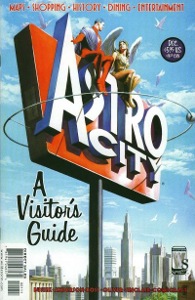 Astro City. Written by Kurt Busiek; art by Brent Anderson; covers by Alex Ross. Published by WildStorm Comics.
Astro City. Written by Kurt Busiek; art by Brent Anderson; covers by Alex Ross. Published by WildStorm Comics.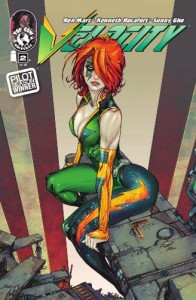 Velocity #2 of 4
Velocity #2 of 4